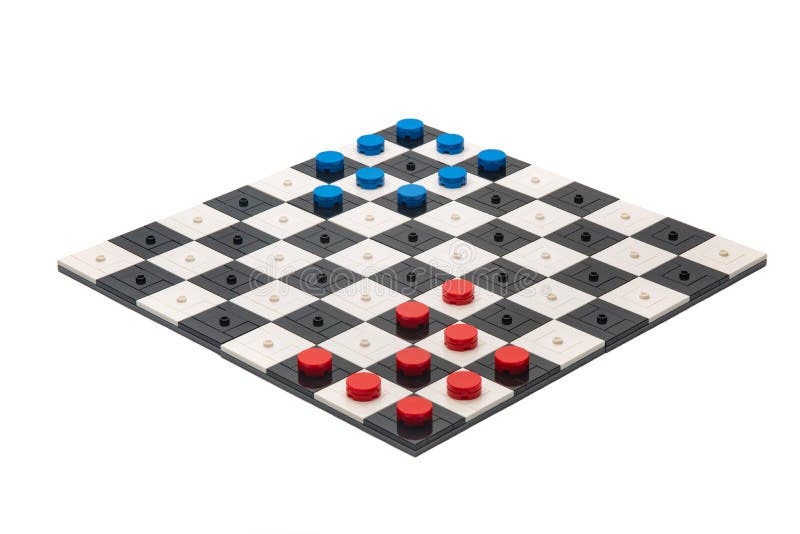
The mechanic of jumping pieces is reminiscent of draughts (checkers) but differs in that no opposing pieces are ever captured or otherwise withdrawn from the board nor is jumping compulsory. Otherwise, play proceeds clockwise around the board. If the current play results in having every square of the opposing camp occupied by one's own pieces, the acting player wins. Once a piece has reached the opposing camp, a play cannot result in that piece leaving the camp. After any jump, one may make further jumps using the same piece, or end the play. The piece that was jumped over is unaffected and remains on the board. Place the piece in the empty square on the opposite side of the jumped piece. An adjacent piece of any color can be jumped if there is an adjacent empty square on the directly opposite side of that piece. One or more jumps over adjacent pieces:. Place the piece in an empty adjacent square. Each player's turn consists of moving a single piece of one's own color in one of the following plays:. Pieces can move in eight possible directions (orthogonally and diagonally). Players randomly determine who will move first. Valid (green) and invalid (red) moves of a white pawn in Halma On each turn, a player either moves a single piece to an adjacent open square, or jumps over one or more pieces in sequence. For four-player games played in teams, the winner is the first team to race both sets of pieces into opposing camps. The game is won by being first to transfer all of one's pieces from one's own camp into the camp in the opposing corner. The game is played by two or four players seated at opposing corners of the board. Piece colors are typically black and white for two-player games, and various colors or other distinction in games for four players. Pieces may be small checkers or counters, or wooden or plastic cones or men resembling small chess pawns. The gameboard is checkered and divided into 16×16 squares. His inspiration was the English game Hoppity which was devised in 1854. Halma (from the Greek word ἅλμα meaning "jump") is a strategy board game invented in 1883 or 1884 by George Howard Monks, an American thoracic surgeon at Harvard Medical School. MathWorld.Board with "camps" marked for two players (blue) and four players (red) ^ Gibert, Bernard, "K004 Darboux cubic = pK(X6,X20)", Cubics in the Triangle Plane, retrieved. ^ a b Longuet-Higgins, Michael (2000), "A fourfold point of concurrence lying on the Euler line of a triangle", The Mathematical Intelligencer, 22 (1): 54–59, doi: 10.1007/BF03024448, MR 1745563, S2CID 123022896. 

See in particular Section 5, "Six notable points on the Euler line", pp. See especially section 4, "détermination du centre de Δ", pp. (1886), "Sur un nouveau cercle remarquable du plan du triangle", Journal de Mathématiques spéciales, 2.

^ a b c d e Kimberling, Clark, "X(20) = de Longchamps point", Encyclopedia of Triangle Centers.The de Longchamps point itself lies on this curve, as does its reflection the orthocenter. It is the only cubic curve invariant of a triangle that is both isogonally self-conjugate and centrally symmetric its center of symmetry is the circumcenter of the triangle. Let the given triangle have vertices A, and the de Longchamps point are collinear. It is the reflection of the orthocenter of the triangle about the circumcenter. In geometry, the de Longchamps point of a triangle is a triangle center named after French mathematician Gaston Albert Gohierre de Longchamps. The de Longchamps point L of triangle △ ABC, formed as the reflection of the orthocenter H about the circumcenter O or as the orthocenter of the anticomplementary triangle △ A'B'C'







 0 kommentar(er)
0 kommentar(er)
